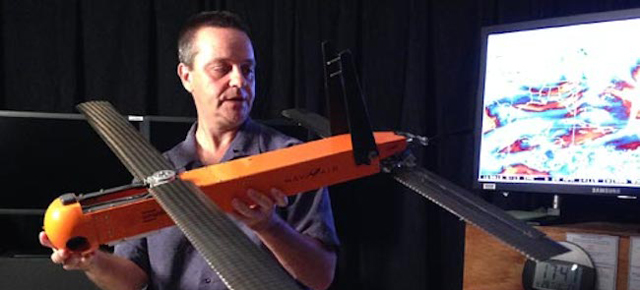When Hurricane Edouard came whooshing over North Atlantic this week, one little drone was ready. The National Oceanic and Atmospheric Administration’s Coyote is neither especially big nor especially tough-looking, but it flew where no pilot — and no drone — had ever flown before. This is the future of storm hunting.
On Monday, this Coyote became the first unmanned aircraft ever deployed into a storm from a NOAA hurricane hunter plane. Usually, NOAA sends dropsondes, weather instruments that float down with parachute. But the seven-pound, six-foot Coyote can be remotely piloted to go up or down, left or right, wherever scientists want to gather wind, temperature, and pressure data. It can fly for two hours on its own.
After Hurricane Sandy, we realised the need to better track hurricanes, and this drone originally developed by the US Navy for surveillance was given to NOAA. Crucially, the Coyote can fly at below 1000m, too low for piloted aircraft or even bigger drones. Hurricanes are formed by the interplay of cool and hot air over warm ocean waters. Knowing what happens at the interface of air and ocean could be key to understanding the intensity of future storms.
For now, the Coyote has only made its maiden voyage. NOAA has said it plans to send up to five drones into hurricanes this season, which will last until the end of November. If it works as scientists hope, Coyote will have some wild rides ahead. [NOAA via LiveScience]
Picture: The Coyote drone. NOAA.
